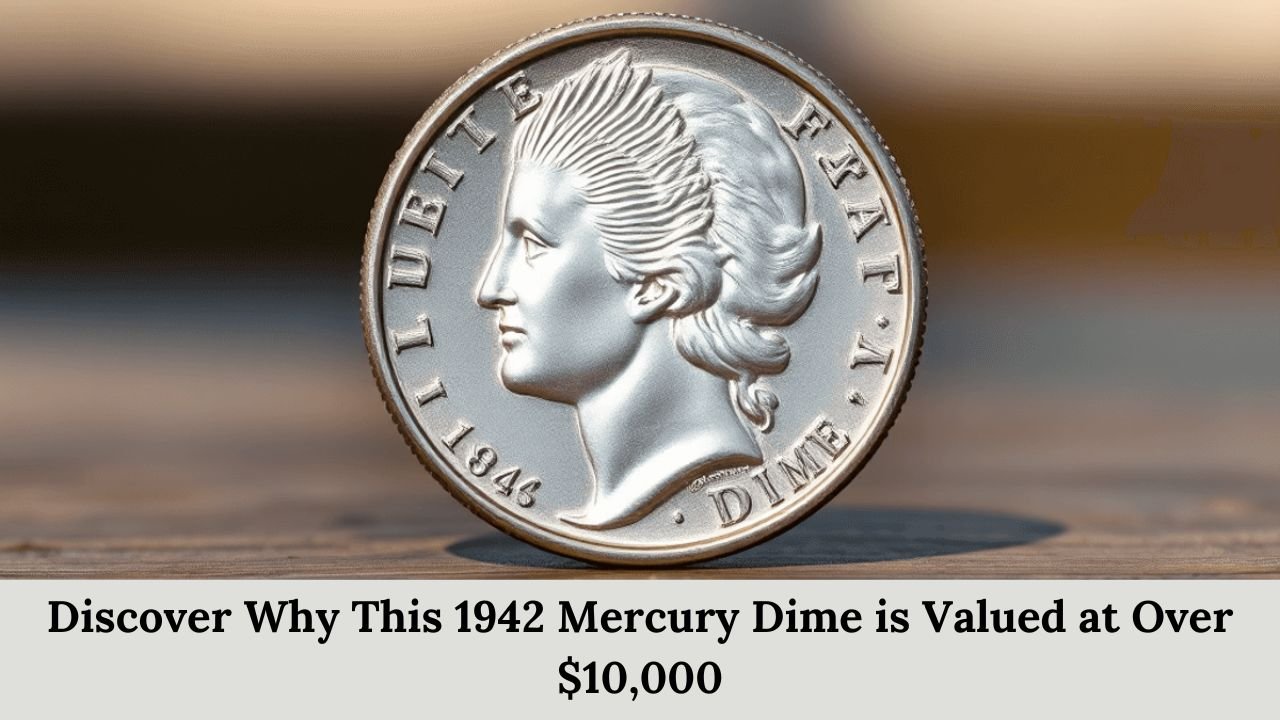Introduction
Created in 1942, the Mercury Dime symbolizes the quality of American coinage, attracting collectors with its artistic beauty and historical significance. Featuring the iconic Winged Liberty Head design, this iconic coin has earned its place in the US. of the most valuable pieces of money.
While a typical 1942 Mercury dime can fetch between $3 and $10 in circulating conditions, the value of a typical one can climb to more than $10,000. Highly prized specimens, especially those with pristine surfaces and complete stroke details, command stellar auction prices.
- Mint National Security
- Full bands on the opposite side
- Rare species (including aliens)
- A wonderful quality
- Page protection
High demand for 1942 Mercury dimes leads enthusiast collectors to pay premium prices for exclusive examples. A PR69 prototype fetched an incredible $37,600 at auction, showing the incredible potential value of this coin for discerning investors.
History Behind the 1942 Mercury Dime
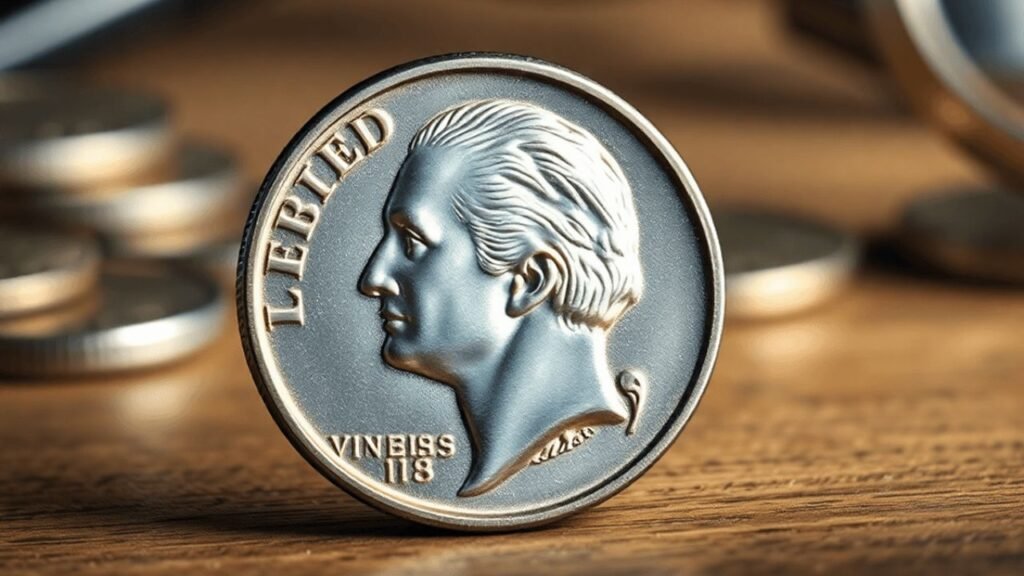
Born in Germany, Adolph A. Weinman designed the Mercury Dime in 1916 to put classical artistry into American coinage. Both the Walking Liberty Half Dollar and the Mercury Dime distinctly molded U.S. numismatic history.
The Mint was established in 1942, the most critical period of American history. A significant milestone was marked with the entry of America into World War II; then, the Mercury dime became a symbol of freedom and resilience. US The bank had incurred an astonishing $205 million in three offices by then.
This image of Liberty wearing a winged Phrygian cap-the symbol of liberty mistaken for the Roman god Mercury gives the coin the popular name. The reverse carries a fasces -the ancient Roman symbol of unity, identity, and strength associated with olive branches representing peace.
Key Design Elements
- Lady Liberty’s profile with distinctive wing details
- “LIBERTY” inscription along the obverse rim
- Roman fasces bound with leather straps
- Delicate olive branch wrapping the fasces
- Mint marks “D” (Denver) or “S” (San Francisco) when present
These elements do not only showcase the masterful art of Weinman but also illustrate important historical themes, including liberty and unity, both of which are especially evocative of the world during the war-torn years of World War II. This academic source will be helpful for anyone interested in knowing the influence of the arts in currency design and its meaning to national identity.
Composition and Specifications of the 1942 Mercury Dime
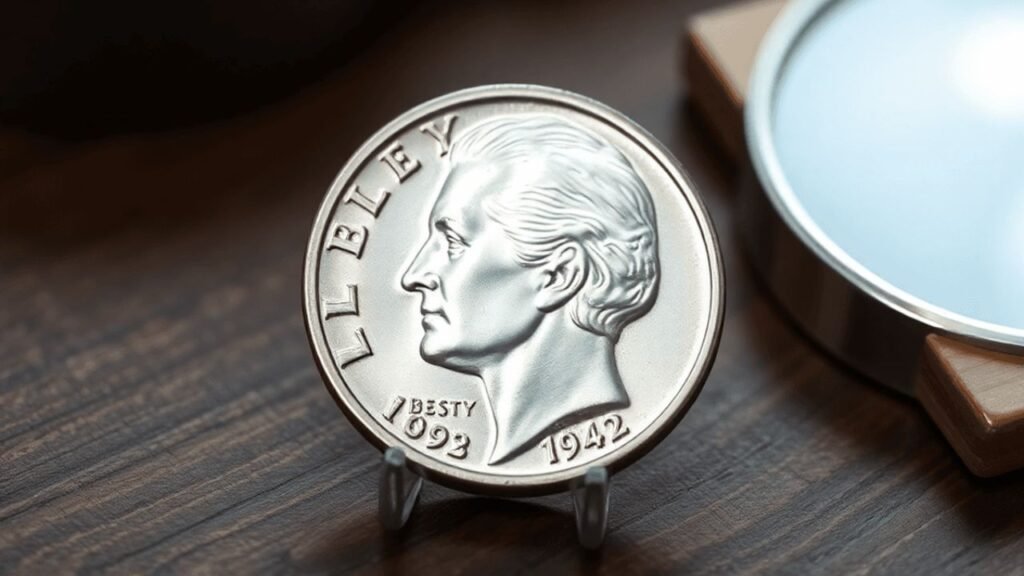
The 1942 Mercury Dime was 90% silver and 10% copper, therefore this coin has an intrinsic value more than its face value. This makes dimes of this year and those with similar composition quite appealing to collectors and investors. In each 1942 Mercury dime, there is 0.07234 troy ounces of pure silver.
Physical Specifications
These bills are important to verify:
- Diameter: 17.9 millimeters
- Weight: 2.5 grams
- Thickness: 1.35 millimeters
- Edge: Reeded with 118 reeds
Such details also contribute to the distinct sound this coin makes when dropped, a real quick check used by seasoned collectors.
Melt Value and Market Influence
The value of money is determined by silver content, which fluctuates as per the market price. At present, according to the price of silver, water in these dimes is worth a few dollars each. Thus, even though they were not collected for historical significance or for value, they still carry their value as precious metal coins.
Preservation Through Silver’s Properties
1942 Many Mercury dimes survive in good condition due to the high silver content. Silver is one of those metals with inherent properties that resist corrosion and tarnishing much better than other coinage metals. Many specimens thus preserve remarkably well over time, making the appeal of collectors greater.
Understanding the Value Factors of the 1942 Mercury Dime
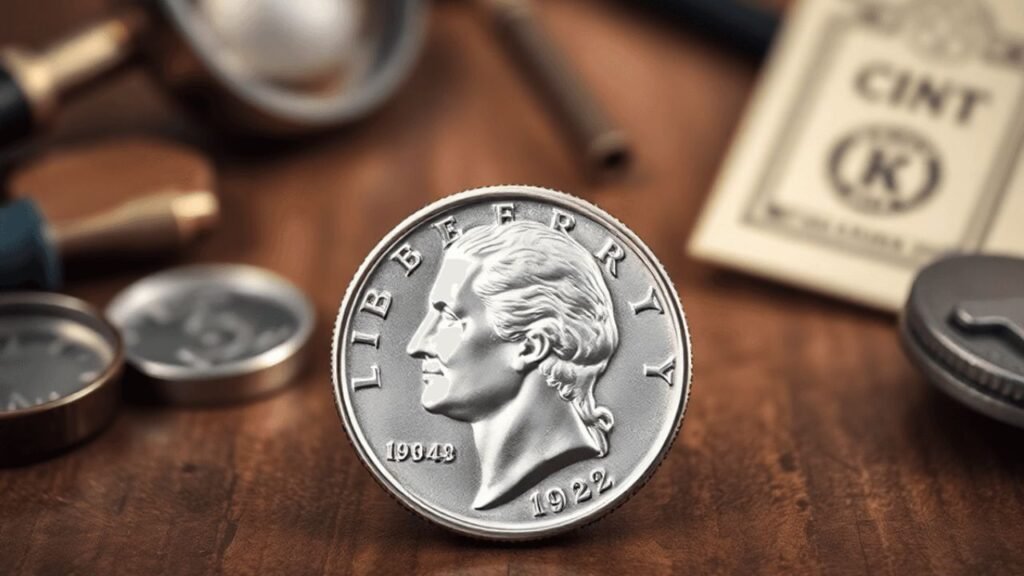
The value of the 1942 Mercury Dime depends largely on several key factors.
1. Condition Grade
- MS-65 to MS-70 (Mint District): $1,000 – $10,000 +
- AU-50 to AU-58 (about unfreshly-minted): $15 – $50
- VF-20 to XF-45 (fine to extra-fine): $5 – $15
- Fine to extra-fine: $3 – $5
2. Rarity Indicators
- Mint mark location (D for Denver, S for San Francisco)
- Strike quality
- Full Split Bands on reverse
- Die varieties and errors
Uncirculated coins with original gloss command high prices, especially those with all the divided lines – the difference between fasses and horizontal lines – these older examples can fetch $5,000 or more on the market.
Rotating examples are still available to collectors, with prices starting at $3 on regular days. The market value of the coins increases dramatically when they are well preserved – exotic pieces that have not been compressed showing minimal contact marks or wear attract the serious interest of collectors
The presence of original toning, striking qualities, and surface preservation play an important role in determining the value of a specimen. Productivity professionals use these attributes to formulate accurate situational descriptions.
Find Rare Varieties and Errors in 1942 Mercury Dime Series
The 1942 Mercury Dime series includes several rare varieties that command high prices in today’s market. The most notable of these is the 1942/1 overdate error, where the 1942 date is printed instead of the 1941 date. This incredible error occurred at the Philadelphia Mint and results in a distinct effect of doubling visible under magnification.
The second precious variation is the 1942/1-D Overdate by the Denver Mint. It has a look somewhat similar to the equivalent variety of the Philadelphia, except with the mint’s distinguishing mark of “D.” Both overdue items can fetch more than $10,000 in an undistributed state.
The Importance of Mint Marks
Mint marks play an important role in indicating rarity:
- Philadelphia (no mint mark): Highest production rate
- Denver (D): They are moderate, some rare varieties
- San Francisco (S): Low mintage, high collector value
Additional Varieties to Look Out For
Other types include:
- Punched again D mint mark
- Diploid dyes
- Dead crack shortcomings
These particular species attract seasoned collectors who understand their historical significance and rarity within the Mercury Dime Series. Each Mint mark carries its own feature set, making certain combinations especially desirable for serious numismatists.
The Impact of Coin Grading on the Value of a 1942 Mercury Dime
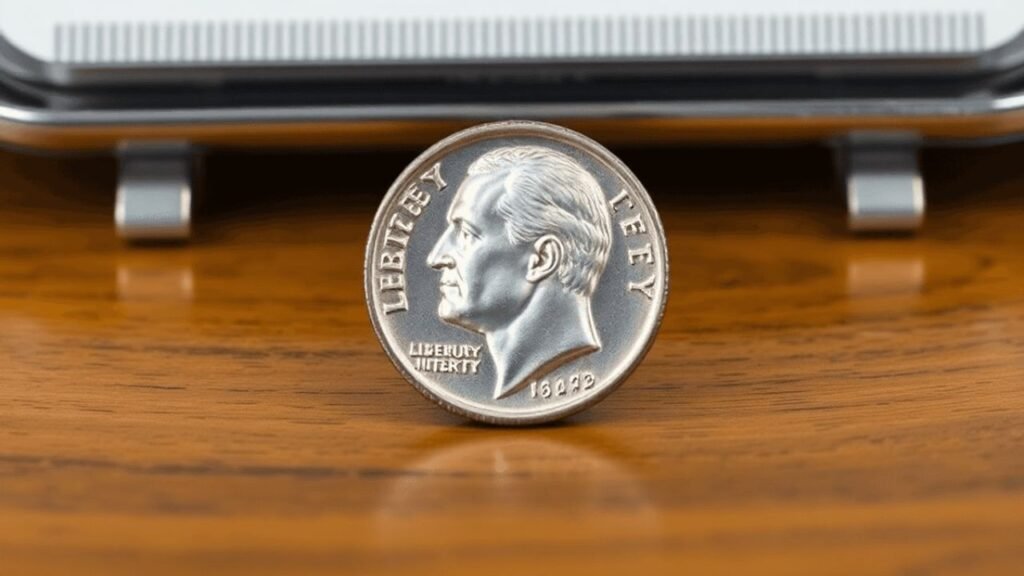
Sheldon Scale is the grading which minting staff employs when grading the 1942 Mercury Dime. Its ratings range from Pour, (P-1), Perfect Mint State, (MS-70). Important grades for quality coins “a” will be closed with MS-60 to MS-70 Covered up to:
- MS-60: Shows no damage but may have several contact marks
- MS-65: Exhibits strong gloss with minimal contact marks
- MS-70: Perfect condition with no visible defects
The main factor affecting the grade of the 1942 Mercury Dimes is the “Full Split Bands” (FSB) on the reverse. This chorus appears in the arrangement of fasces:
Central bands must show full separation with sharp and clear definition to qualify for the FSB designation, adding a significant premium to the value of the coin
Differences in value between grades can be substantial. The 1942 Mercury dime graded MS-60 would be selling at as low as $20 or as much as $30, an MS-65 might be found to sell $200-$300, the higher grading up to 67 would command thousands with some reaching high dollars even selling in MS67 and at higher points having FSB.
Toning is tolerated as much as possible given its stable stability. Also, providing stability to their stability; they ensure coin encapsulation from third parties, that are PCGS and NGC.
Current Market Demand and Pricing Trends for 1942 Mercury Dimes
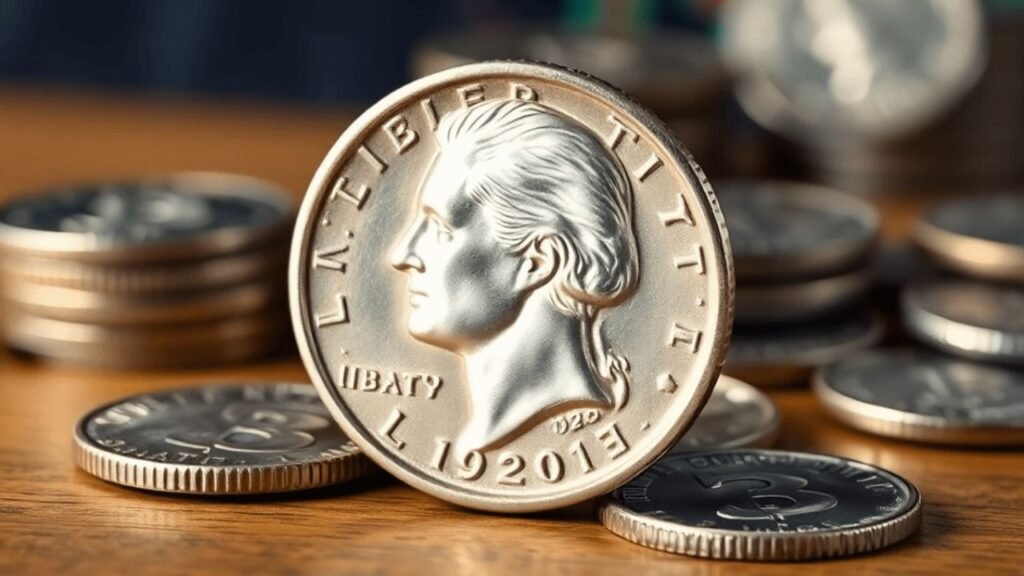
The collectible coin market shows high demand for 1942 Mercury Dimes, and luxury prices continue to rise. Recent market data highlights these key pricing trends:
Common Date Values
- Rotating status: $3-$10
- MS60-MS63 uncirculated: $20-$50
- Fine MS65-MS66: $100-$500
Rare Variety Values
- Full-length MS67: $2,000-$5,000
- PR68: $15,000-$25,000
- PR69: $35,000-$40,000
A stunning PR69 example fetched $37,600 at auction in 2022, setting a precedent. The market particularly values coins with original brightness, minimal contact marks and an incredibly dynamic quality.
Investment specimens continue to attract serious collectors, providing competition for auctions. Professional sellers report increased interest from both established numismatists and new collectors entering the market. This increase in demand can easily be seen in MS65 coins, fully split band, that only few are found.
Tips for Finding Rare Coins in Your Pocket Change: The Thrill of Discovery!
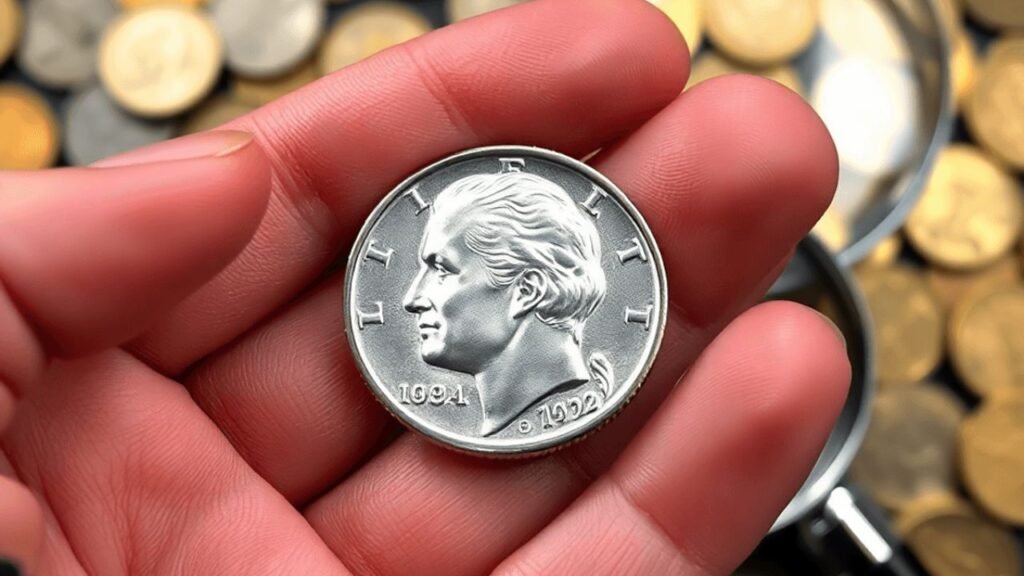
Finding valuable 1942 Mercury dimes in your pocket change requires a clear eye and an organized approach. Here’s your treasure hunt plan:
- As an adjustment, you should check the dates on each dime
- Look for silver dimes that have a special ring when dropped
- Check for mint marks with a magnifying glass
- Pay particular attention to the money spent on ancient sites and countryside
- Ask for stamps from banks in the historic area
Pro Tips:
- Reach out with a small LED light and look at details in poor light
- Learn how to identify a specific Liberty chapter design
- Download a reference image of the 1942/1 overdates
- Consider buying required funds from banks
- Look for cash back locations on vending machines and cash operated washing machines
With the rare circulation of the 1942 Mercury Dime, the excitement makes every trade an exciting treasure hunt. The next great find is just sitting in your change pocket, waiting to be discovered.
And just imagine all the potential dimes-you never know what might pop up. If you ever came across an old jar full of money, this guide could help identify possible treasures.
And, if you are a serious fundraiser and want to get a better sense of what your fundraising is worth, check out this research guide.
Conclusion
The 1942 Mercury Dime is an exciting place to start investing in rare coins. By starting your savings in this historic resource, you have the potential for great financial rewards. The market for these rare coins is still strong, and dedicated collectors are willing to pay top dollar for unique coins.
Here’s why the 1942 Mercury Dime is a smart investment.
- Historical Significance: The connection to World War II adds lasting value
- Significance: Various outstanding measures such as the 1942/1 Extra date mandate price increases
- Investment: Well-preserved specimens can be greatly appreciated
Start your collection today – do thorough research, contact reputable brokers, and join the banking community. Mercury Rupees acquired in 1942 could just be your entrance to a fruitful hobby that merges amusement with prospective profit.
FAQ’s
What is the monetary significance of the 1942 Mercury Double?
The 1942 Mercury Dime is highly sought after by collectors for its design and historical details. It can be worth more than $10,000, making it a prime holding for collectors and money market investors.
Who invented the Mercury Dime in 1942, and what were its distinctive features?
The 1942 Mercury Dime was designed by Adolph A. Schmidt. These accessories make it popular and valuable among collectors.
Which metals are used in a 1942 Mercury Dime?
The 1942 Mercury Dime is 90 percent silver and 10 percent copper. This amount of silver has a significant effect on its value, especially when considering the current precious metal market.
What brings up the price for Mercury for 1942?
The value of 1942 Mercury dimes basically depends on the quality, rarity, and whether circulating or not. This can be used as an understanding by collectors on what value to place.

